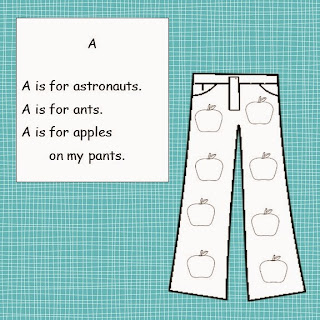Hi Everyone! It's Jennie from JD's Rockin' Readers. If you know me at all, you know that I have a passion for Guided Reading and meeting the needs of all students during Guided Reading in my classroom. What you might not know is that as much as I love Guided Reading, Writing Workshop is actually my favorite part of the day... there are two big reasons why!
2. Each student is working at their own level!
Please know that what I write in this blog post is how I run my Writing Workshop. I realize different things work for different people. What I am going to write about works for me and my kiddos. I hope that maybe I can give you some ideas to add to your writing workshop time…
Why do I choose to teach writing in a Writing Workshop format?
- ALL students are working at their own level!
- Students get to choose topics that interest them to write about.
- The mini-lesson allows for Interactive Writing (share the pen).
- Writing Workshop allows the teacher to conference with students individually or in small groups to focus on their needs.
How do I get started with Writing Workshop?
- I start on DAY 1. I encourage students to just write, write, write from the start. Anything goes and no matter what they are writing about- it is AMAZING!
- I get REALLY excited each day before we start writing. I tell them how much I love writing workshop and how much they are going to love it too! Positive energy about writing is really contagious!
- The first days/weeks I really focus on the rules, routines, and organization of Writing Workshop.
If you were to walk into my room during Writing Workshop, what would it look like?
- Writing Workshop lasts about 45-60 minutes every day.
- First, we do a mini-lesson (usually on the SMART board). I try to keep the mini-lesson between 10-15 minutes. Many times we are writing together doing a shared interactive writing and writing stories together.
- After the mini-lesson students will begin writing on their own. I call table groups to get their writing folder as we watch how well everyone can get started quickly and quietly.
- I have soft music playing. I usually listen to a Pandora station.
- Students will be spread around the room. I switch off each day, BOYS will work on the floor one day while the GIRLS are at their seats and then visa-versa.
- Students on the floor are sitting on mats in their own area (they get to choose). I don’t allow students to go under desks though or else it turns into a fight of who gets to sit where. They must not be able to hold their arms out and touch another student.
- I meet with students (usually about 5 each day). We discuss their writing and talk about where they are going with it. I focus on WHAT they are writing and spend very little time worried about mechanics.
- Students write for about 20-30 minutes and then come to the “story pit” to share.
- I have sharing/conferencing charts that I use. Each group has about 5 students and I meet with those students that day and then they also share. They share their stories no matter where they are in the writing process. We focus by giving 2 compliments and an idea.
My newest product is structured the way that I run my Writing Workshop. I did these lessons with my first graders and they are now writing up a storm! I love to see how excited they are when writing time comes around every day.
Also, here are some Editing Checklists (freebie) that the kids can use to help them edit their own writing.
Also, here is an EDITABLE letter (freebie) that can be sent home to parents that tells a little about our Writing Workshop!
There is so much more that I could write about but I didn't want this post to go on and on... if you have any specific questions about how I run my Writing Workshop or any questions about this product, I would love to hear them!





















































